To understand how artificial intelligence has revolutionized energy efficiency at Hotel Poseidon Playa, let's take a closer look at the management of the Bar-Cafeteria area. This area provides an excellent case study of how AI can effectively manage energy consumption, considering a variety of key factors, such as indoor and outdoor temperature, baseline temperatures, occupancy patterns, and potential optimization errors. A crucial element in this analysis is that schedules for HVAC systems and other devices are based on an on-off model. That is, if the power profile exceeds 10 kW, the machine is considered to be in operation; otherwise, an off signal is issued. Figure 1 in the study presents the behavior of these variables over a three-day period, from May 27 at 9:00:00 am to May 30 at 9:00:00 am.
Figure 1. Time series of optimization parameters in "Bar Cafeteria".
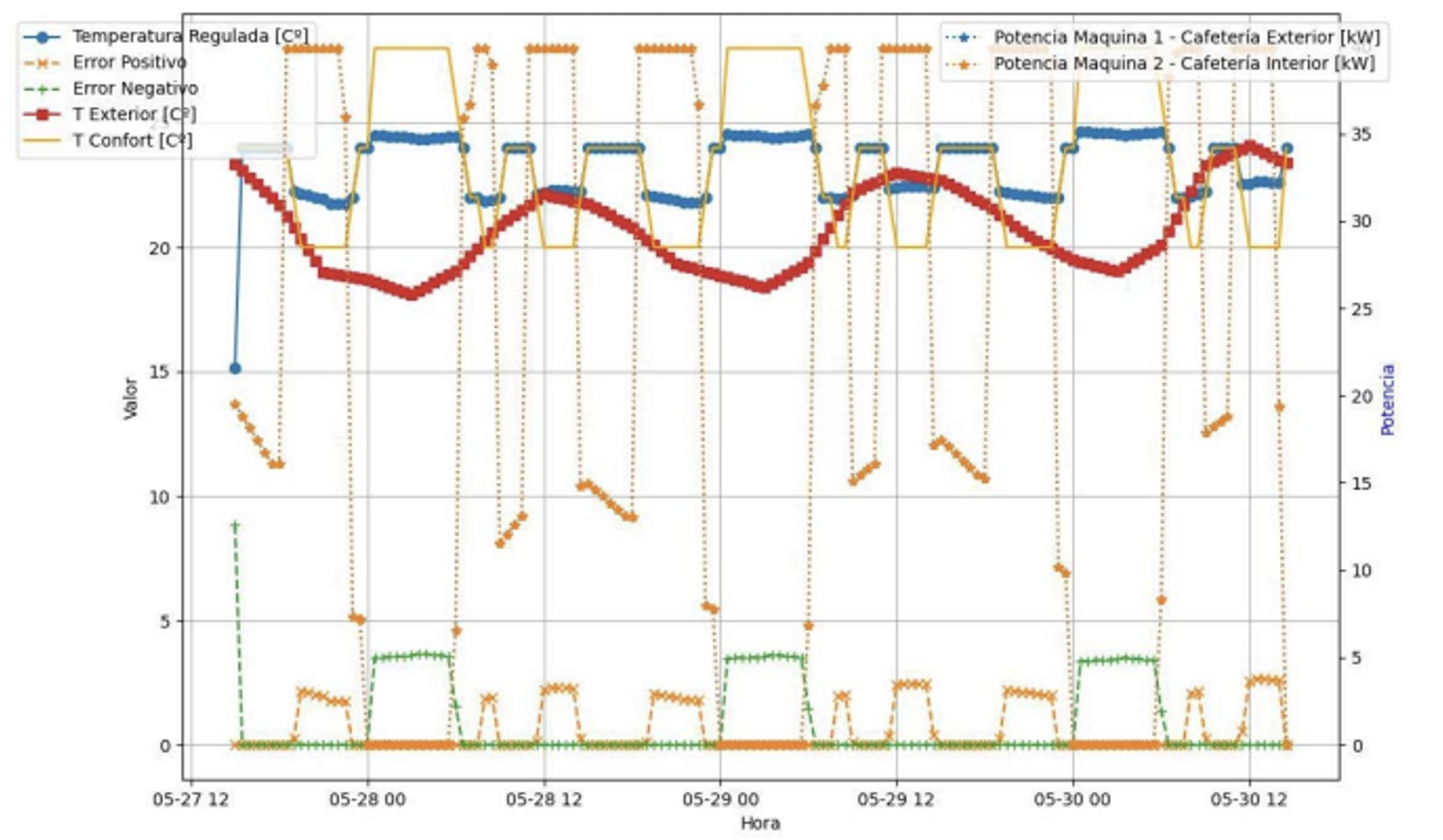
In this scenario, artificial intelligence plays a key role by turning on machines during times of high occupancy or when environmental conditions threaten to alter thermal comfort. To determine the ideal temperature to ensure optimal comfort for hotel occupants, several critical factors are taken into account:
- Dress codeThis coefficient, which is set at "1.0 Clo" per person, reflects the typical clothing conditions for the summer season, which directly influences the perception of thermal comfort.
- Metabolic rateMetabolic rate varies between "1.0 Met" for people who are sitting or eating, and "2.0 Met" for those who are standing or cooking. This variable is essential to calculate how the human body interacts with its thermal environment.
- Air velocityIt is estimated at less than "0.2 m/s" due to the absence of significant air currents in closed environments, which minimizes the sensation of cooling due to air movement.
These factors are integrated into the comfort temperature programming, which is then translated into on/off commands for the HVAC devices. Figure 2 of the study graphically shows this scheduling, focusing on zone 4 of the hotel. In this way, the AI ensures that during off-peak hours, such as late at night, the cooling systems remain off. However, these systems are reactivated in the early morning hours, coinciding with the increase in occupancy and temperatures, thus ensuring comfort during breakfast hours.
Figure 2. Prediction of the switching on and off of the refrigeration machines in zone 4 of "Bar Cafeteria".
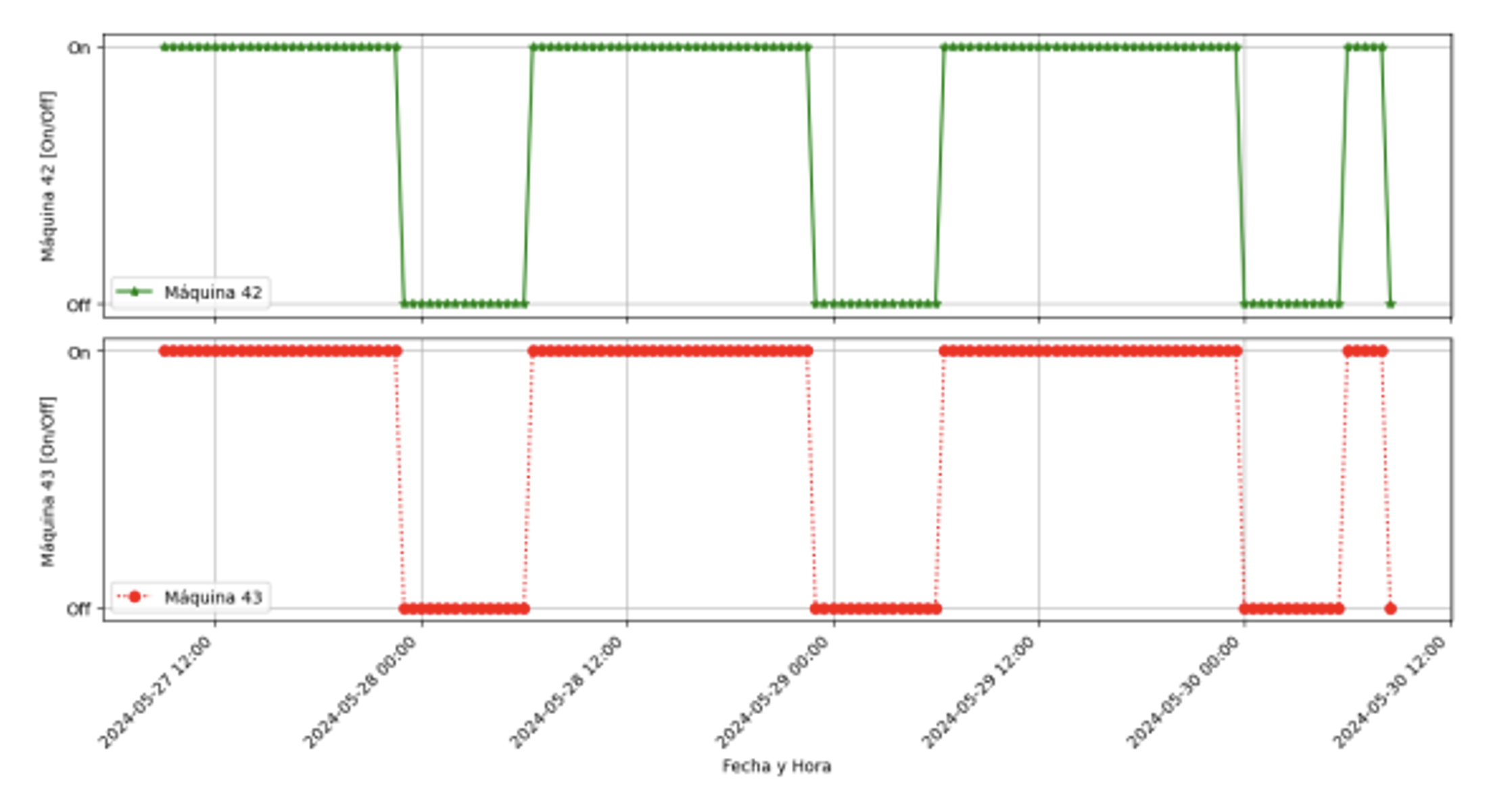
Once the on/off scheduling of the machines is generated via APIs, the system operator has the ability to approve or reject this forecast before it is implemented in the hotel, as shown in the Airen Zero platform. This process allows for ultimate human control, ensuring that any necessary adjustments can be made before the schedule is executed.

A crucial aspect that should not be overlooked is the flexibility offered by artificial intelligence in this context. The parameters and settings obtained through AI can be modified at any time by the hotel's maintenance managers through the Building Management System (BMS). This provides immediate responsiveness to any changes in operating conditions, enabling continuous and adaptive optimization of the system.
Upon closer analysis of the signals received at the Bar-Cafeteria, it has been observed that the 1 °C resolution of the temperature sensors can introduce significant variations in the model, especially when sudden changes in environmental conditions occur. To mitigate these effects, a signal smoothing process was implemented, eliminating spikes and providing a more accurate and uniform representation of thermal variations. After testing various algorithms and mathematical techniques, it was concluded that a moving average was the most effective solution for smoothing sharp peaks and fluctuations. This approach showed an error that, in 95% of the samples, did not exceed 0.5 °C, which is a significant improvement. Figure 4 of the study illustrates the smoothed internal temperature signal for zone 4, while Figure 5 details the corresponding error for each instant.
Figure 3. Signal history in zone 4 of "Bar Cafeteria".
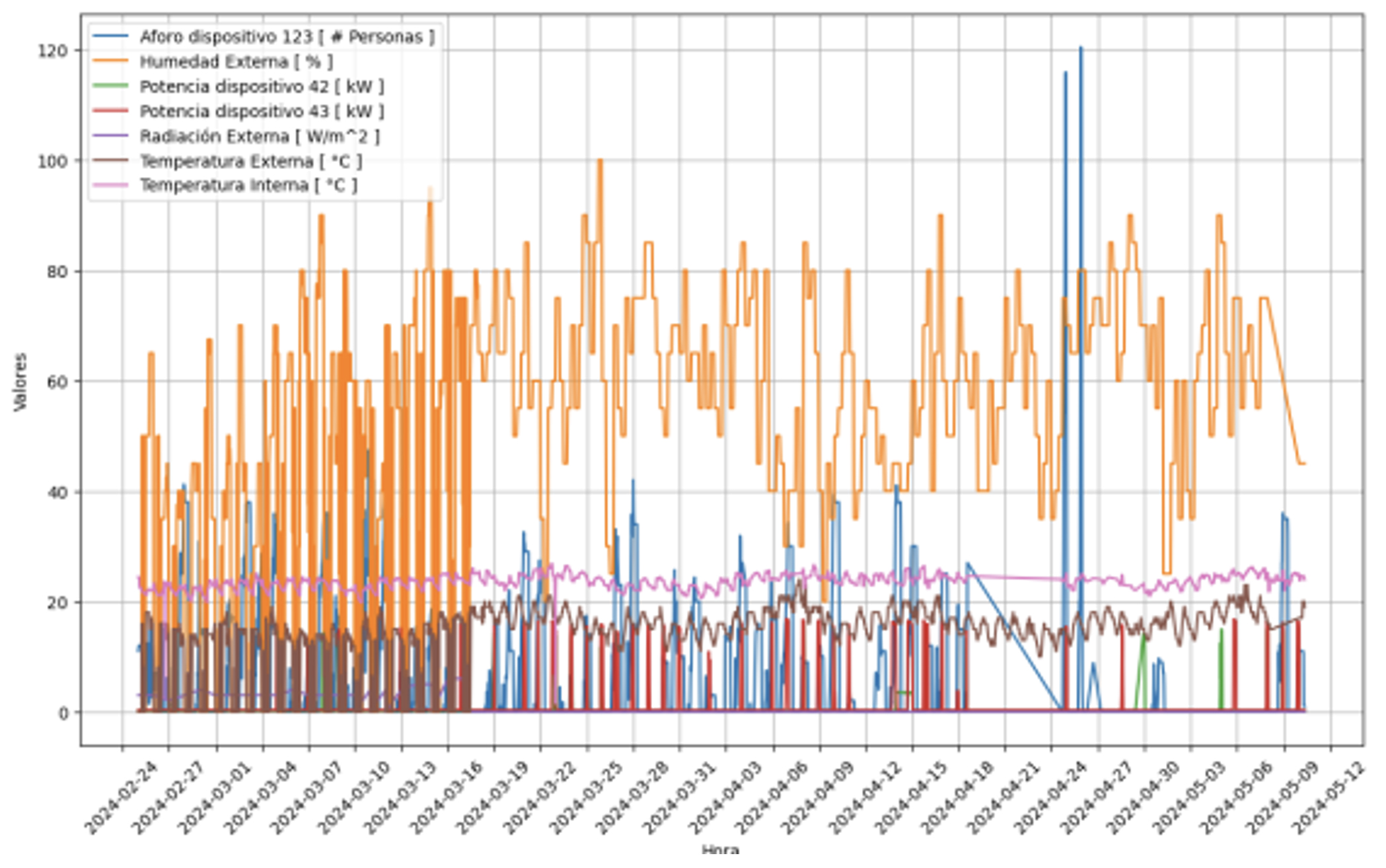
The artificial intelligence model, together with the algorithm that generates the schedules, must be able to accurately identify when the power profiles of the machines indicate that they are on or off. This parameter is critical not only for training the model, but also for generating machine on/off forecasts. For this reason, the power profile signals, both historical and predicted, are converted into Boolean signals that indicate the state of the devices. Figure 6 shows an example of the power signal of one of the refrigeration machines, together with the corresponding on and off signals used by the implemented algorithms. In this figure, it can be seen that a Boolean signal "1.0" or "True" is recorded at the instant the machine is turned on or off.
Figure 4. Average internal temperature and internal temperature with moving average
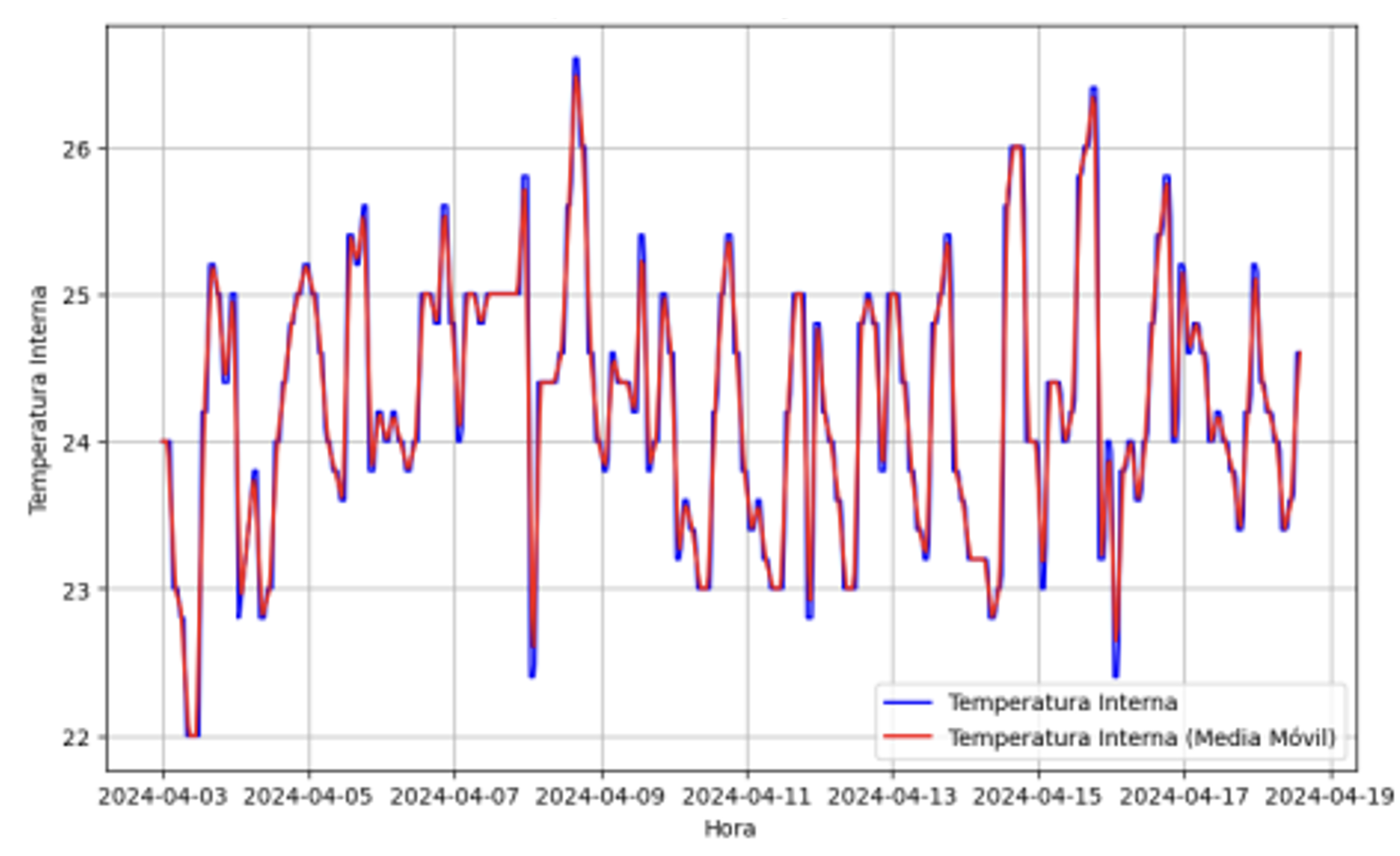
Figure 5. Signal error in internal mean and moving average temperature
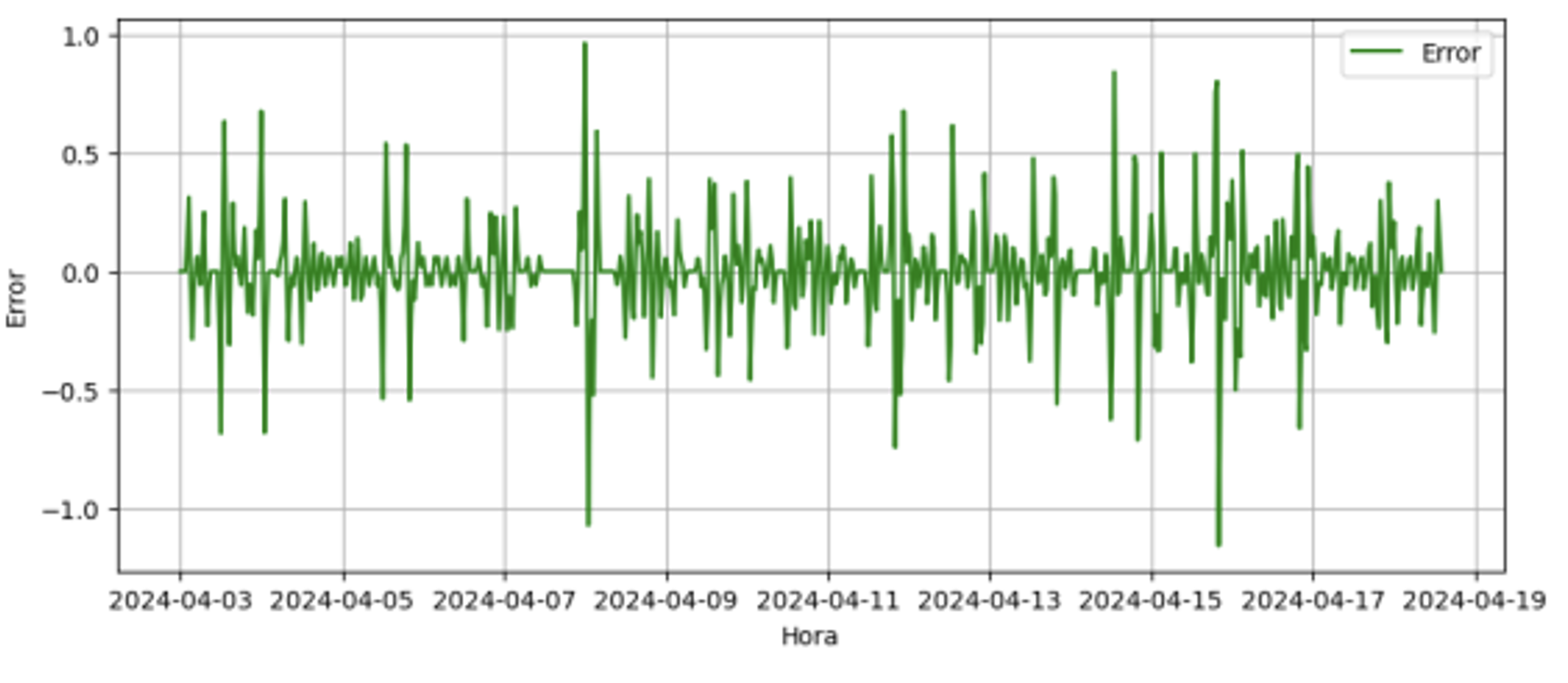
Figure 6. Power, start-up and shutdown of refrigeration machines in Zone 4
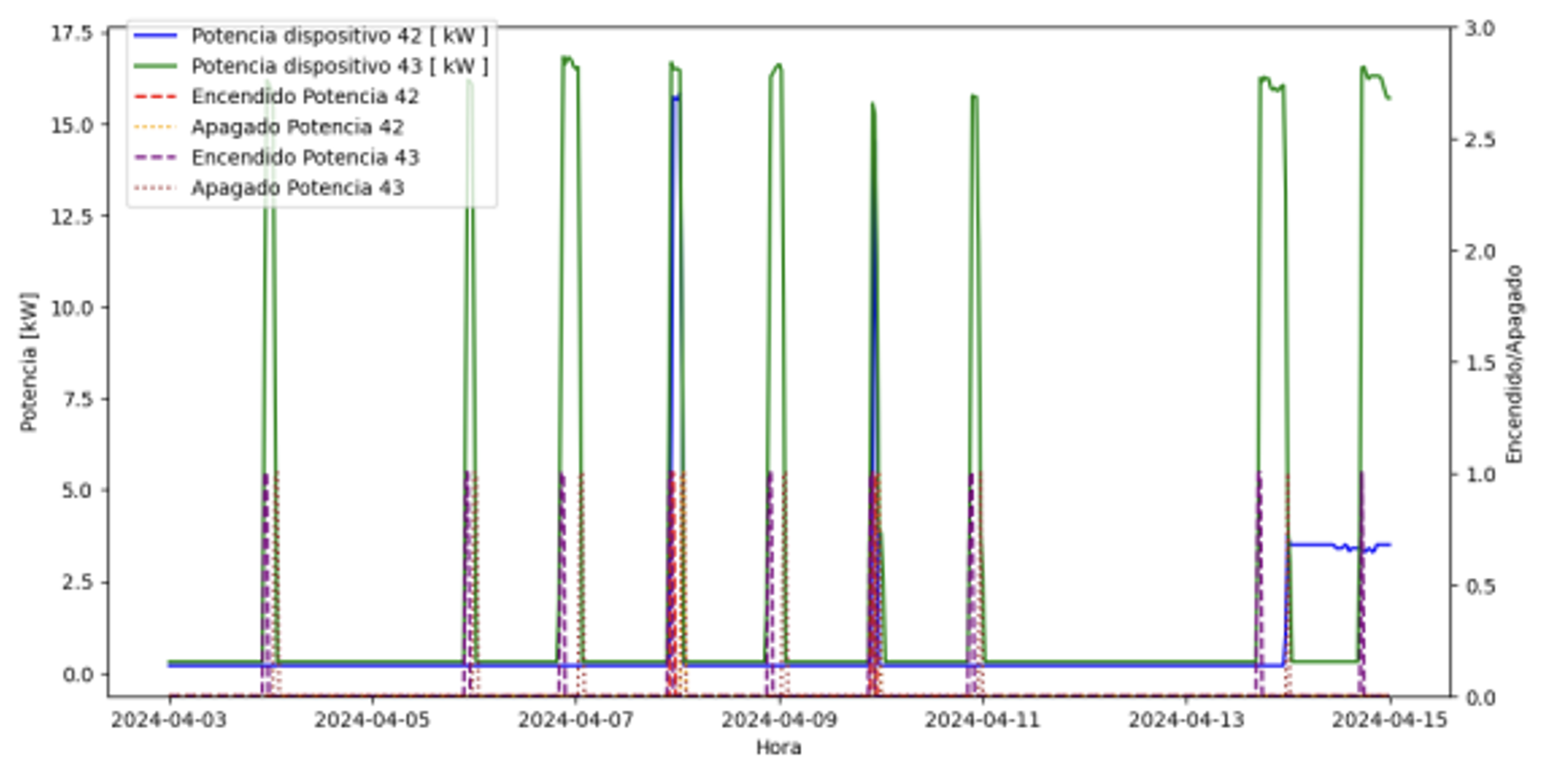
Taking into account these data and the submitted planning, the AI system not only adapts to the expected seasonal conditions, but is also able to take advantage of the thermal inertias that occur, contributing to a significant reduction in energy consumption. This optimization capability is key to maximizing the hotel's energy efficiency, minimizing environmental impact and reducing operating costs.
With a larger and more representative volume of data, it is possible to more accurately calculate the impact of thermal inertia harvesting on energy savings, enabling a more robust and detailed assessment of system efficiency. As more data is collected across different seasons and operating conditions, artificial intelligence can refine its predictive models and adjust control strategies more precisely. While this more comprehensive analysis will provide more accurate figures, current data already demonstrates a significant impact on reducing energy consumption while managing to maintain and even improve user comfort, underscoring the effectiveness of this technology in balancing efficiency and customer satisfaction.
However, the implementation of the AI system at the Poseidon Playa Hotel is tangibly demonstrating that it is possible to achieve the sustainability and energy efficiency goals set by taking advantage of thermal inertias, and optimizing energy consumption without compromising guest comfort, aligning perfectly with current regulatory requirements and actively contributing to the goal of a zero-emission building stock by 2050. This success story reinforces the viability and effectiveness of AI as a key tool to transform the hotel sector towards a more sustainable future, balancing operational efficiency with guest wellbeing.
